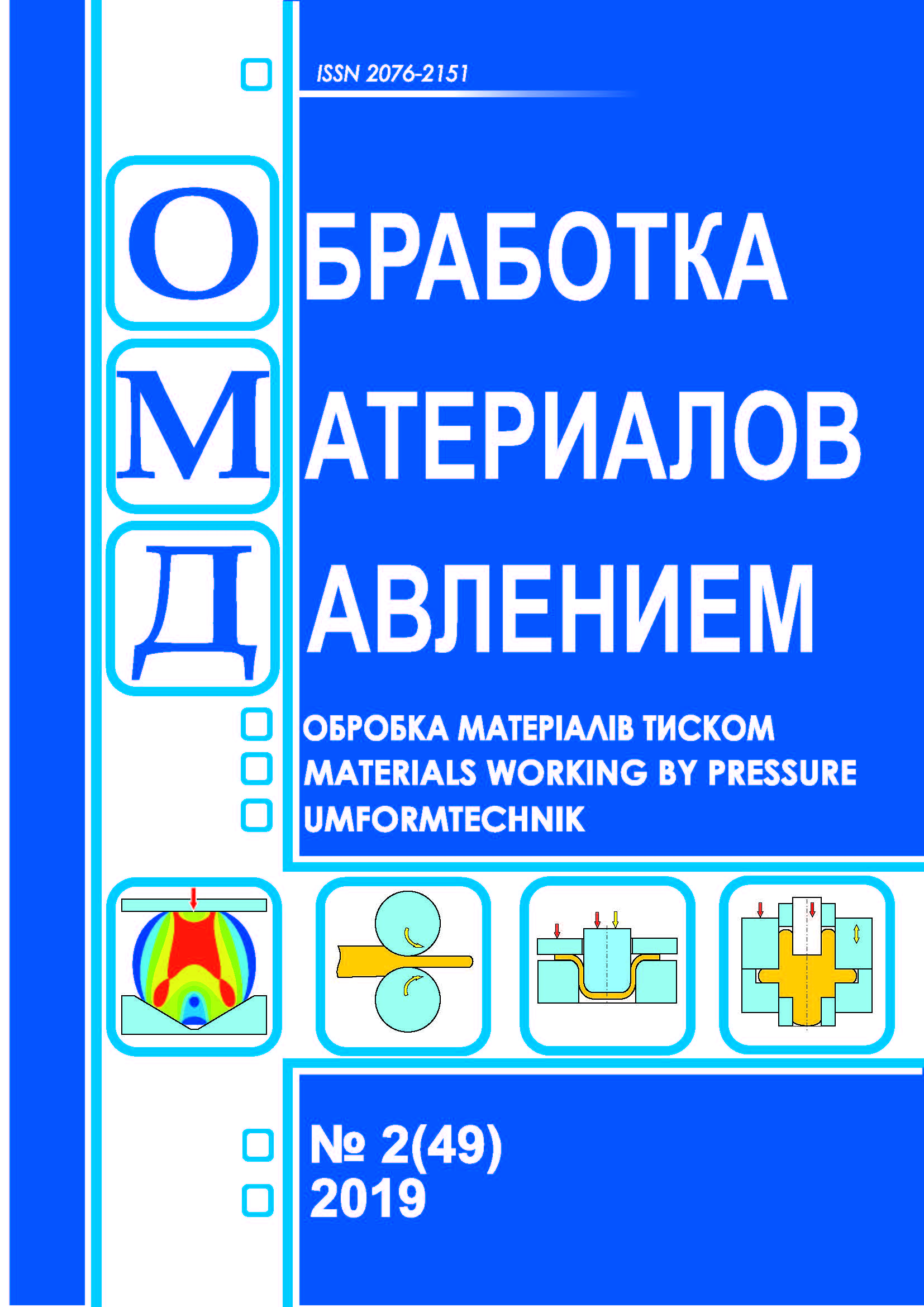Combined backward forward extrusion of hollow conic parts
DOI:
https://doi.org/10.37142/2076-2151/2019-2(49)98Keywords:
hollow conical product; finite element method; combined drawing; crimping; drawing forces; crimping forces; stress-strain state of metal.Abstract
Aliiev I. S., Tagan L. V., Samoglyadov A. D., Makhmudov K. D. Combined backward forward extrusion of hollow conic parts // Material working by pressure. – 2019. – № 2 (49). - Р. 98-105.
The aim of the work is to determine the feasibility of the process of combined reverse-direct extrusion without transition to reverse extrusion at the final stage of the process. In the finite element analysis of the extrusion process, the friction coefficients of the metal along the matrix and punch were taken as the main control parameters. In the course of studies of the process of combined reverse-direct extrusion, it was found that the change in the extrusion force during the process is uneven and can be divided into three main stages. At the first stage, there is a sharp increase in the extrusion force when unpressing the workpiece. At the second stage, the process can be considered established, because the increase in extrusion force is negligible. The third stage of extrusion occurs when the lower end of the semi-finished product comes into contact with the counter-punch and is characterized by a sharp jump in the force parameters. This is due to the transition from the combined flow of metal to simple back extrusion. It is established that for small values of the friction coefficients for tools, the prevailing direction of the metal flow is the straight line. An increase in the length of the inclined generatrix on the matrix also affects the flow of the metal. The shorter the contact length of the workpiece with the matrix generatrix, the more extrusion processes become similar to the compression process, in which the semi-finished product is drawn into the matrix cavity without changing the bottom thickness. It has been established that characteristic defects in parts obtained by combined reverse-direct extrusion are non-filling of the corner zones of the part and the appearance of gaps (weights) between the end face of the punch and the bottom of the cavity.
References
Romanovsky V.P. Handbook of cold stamping. Leningrad: Mechanical Engineering. 1979, 520 p. (in Russian).
Forging and stamping. Handbook. In 4 t., T. 4. Sheet stamping. Ed. Matveev A.D. Moscow: Mechanical Engineering. 1987, 544 p. (in Russian).
Aliiev I.S., Kashchenko Yu.A, Eremin V.II. The study of the technological process of extrusion of hollow conical parts. Progressive technology, equipment and accessories for the intensification of pressure working processes. Kyiv: UMK VO. 1991, pp. 22–31. (in Russian).
Valiev S.A. Combined deep drawing of sheet blanks. Moscow: Mechanical Engineering. 1973, 176 p. (in Russian).
Aliiev I.S., Kalyuzhny V.L. Determination of parameters of two–transition high–cone stamping of sheet metal billet. Bulletin NTU "KhPI". Kharkiv. 2016, 30 (1202), pp. 5–12. (in Russian).
Aliiev I.S., Gnezdilov P.V. Comparative analysis of methods for extruding hollow conical parts. Proceedings of the 17th International Conference “New technologies and achievements in metallurgy, material engineering and production engineering”: Series: Monografie, 56, Częstochowa. 2016, pp. 179–182. (in Russian).
Alexandrov A.A., Leksutov I.S. Modeling the process of cold transverse direct extrusion of products with a conical bottom. Omsk Scientific Herald. 2007, 2 (56), pp.129–131. (in Russian).
Ekk E.V., Dammer A.E., Kononov V.T. Determination of the shape change and the efforts of combined extrusion of hollow forgings of a conical shape. Izvestiya. Ferrous Metallurgy. 1983, 2, pp. 46–50. (in Russian).
Biba N.V., Stebunov S.A., Gladkov Yu.A., Mordvintsev P.S. QForm, a universal and effective program for modeling forging and stamping. Forging and Stamping Production. Material Working by Pressure. 2011, 1, pp. 36–42. (in Russian).
Aliiev I. S., Kordenko M.Yu., Samoglyadov A.D. Combined extrusion of hollow conical parts. Material Working by Pressure. Kramatorsk: DSEA. 2018, 2 (47), pp. 90–95. (in Russian).
Kosenko M.V., Nagorskaya I.V., Gulkova O.V. Research of the initial stage of extrusion of hollow conical parts. Material Working by Pressure. Kramatorsk: DSEA. 2009, 2 (21), pp. 61–65. (in Russian).

